Residents can dispose of food scraps and garden clippings via NAWMA’s fortnightly kerbside collection service. NAWMA will collect the contents of your green-lid FOGO (Food Organics and Garden Organics) bin for composting by our partner Peats Soil & Garden Supplies. Composting organic material means that nutrients can be reused in gardens as well as large-scale horticultural and agricultural operations to improve the quality of the soil.
Food & Garden Organics Composting
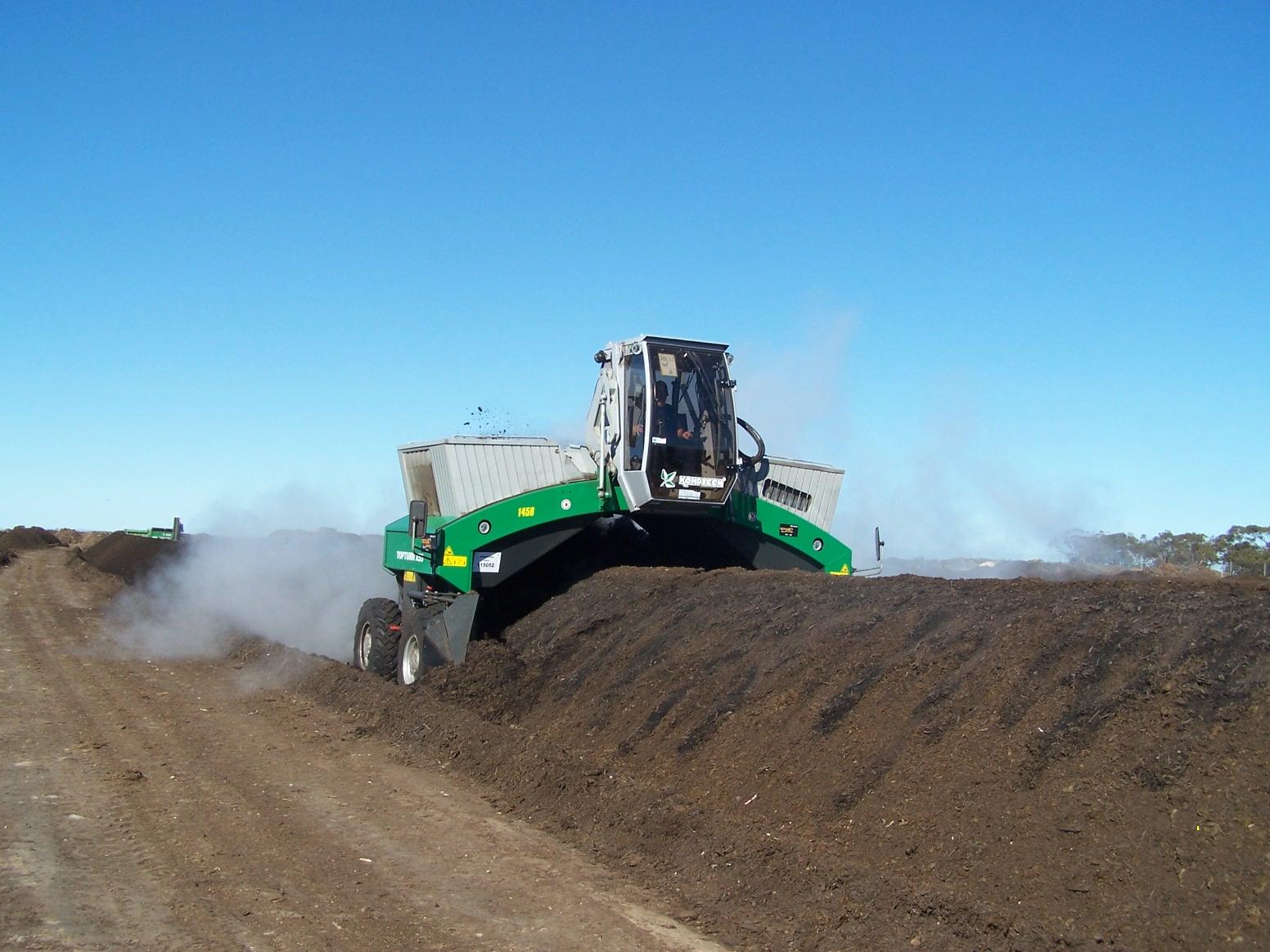
Residents can obtain a 240 litre or 140 litre green-lid FOGO bin to use to collect food waste and garden clippings for composting. Find details here.
The green-lid FOGO bin is collected every fortnight on the alternate week to the yellow-lid recycling bin.
Click on the PDF link below to view our FOGO brochure.
If you have a large quantity of green waste to dispose of, you can drop it off at either of NAWMA’s Resource Recovery Centres for processing into compost (fees apply).
The NAWMA bin stamp below shows the range of things that can be placed into the green-lid bin.
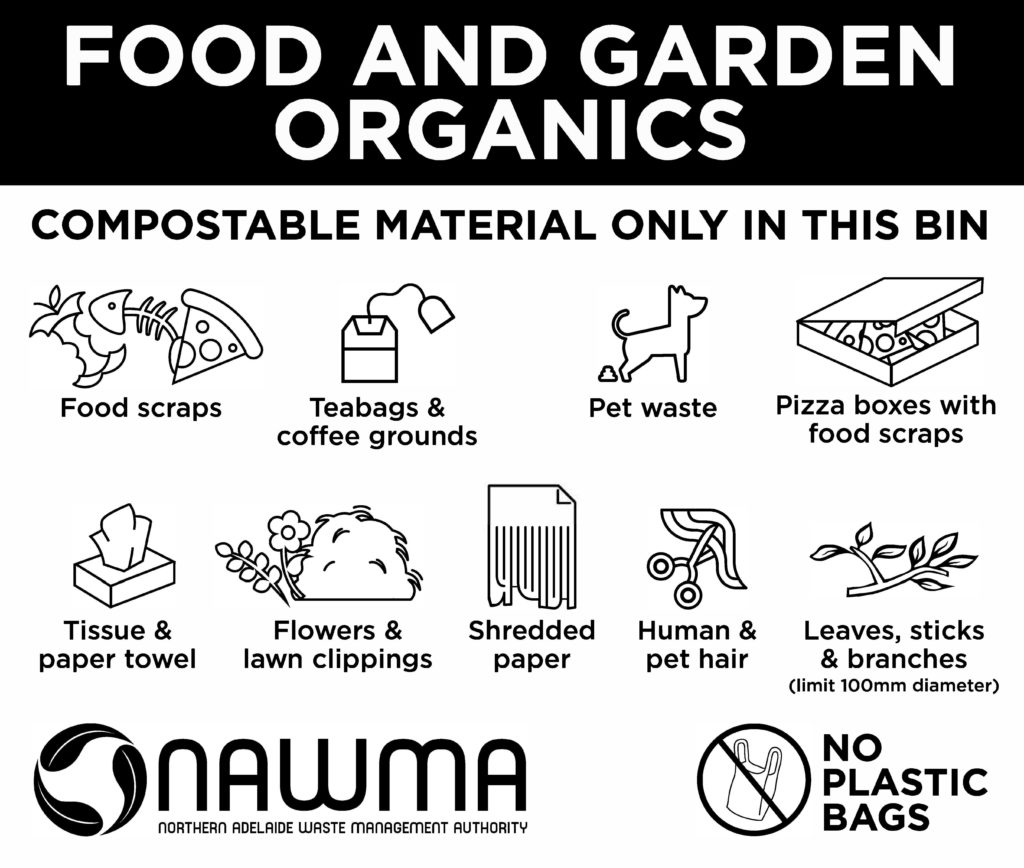
Please remember, no plastic bags are permitted in the green-lid FOGO bin as these will contaminate the final compost that is made from the green waste.
Click on the PDF link below to view Peats compostable products brochure.
Collecting your food scraps
If you order a FOGO bin from NAWMA, you will receive a free ventilated kitchen caddy to collect your food scraps. If purchased elsewhere, you may be able to collect a free kitchen caddy from your Council, please contact your Council for more information.
Compostable bags
Residents are welcome to place food scraps into compostable bags to put into the green-lid bin.
Compostable bags and packaging should be certified to Australian Standard AS 4736 or AS 5810. Look for the logos shown below.
These types of truly compostable products will completely decompose along with organic material. Plastic bags and packaging that do not comply with the Standards (such as those labelled ‘degradable’), may only break down into smaller pieces of plastic, which contaminate the compost that is made.
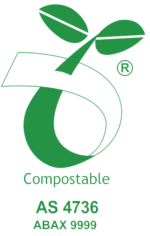
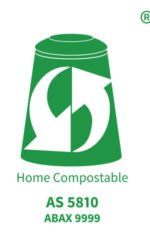
Tips to avoid a smelly FOGO bin
During the warm weather, you may notice your FOGO bin starting to get a bit smelly. It is normal for the contents of your FOGO bin to start to smell as they naturally decompose, but there are some simple steps you can take to reduce the odour.
- Store your FOGO bin in a shady spot.
- Make sure there are no cracks in the bin and keep the lid closed.
- Put a layer of cardboard, pizza boxes, newspaper, shredded paper, or dry leaves in the bottom of the bin to absorb liquid.
- Put dry lawn clippings and dry garden clippings in the bin.
- Wrap pet poo in newspaper or use a compostable bag.
- Put your smelly food scraps in the freezer until bin night.
- Clean your bin with hot soapy water or turn upside down and place on top of a garden sprinkler.
- Sprinkle baking soda, compostable kitty litter, vinegar, oil of cloves or lemon juice into the bin after it has been emptied.
- Use some citronella or tea tree oil on the top of your bin as a natural insect deterrent.
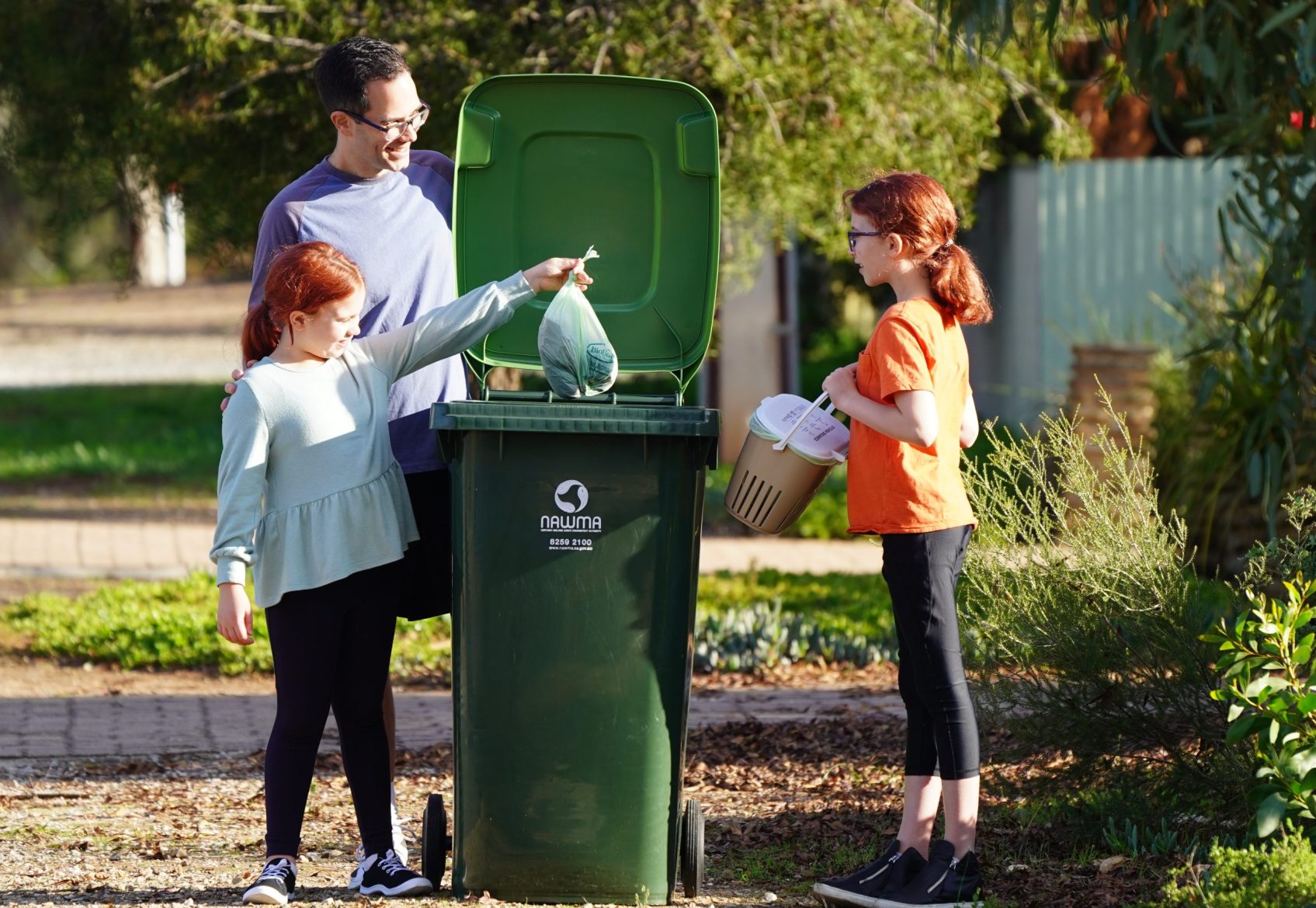
Tips to avoid a smelly kitchen caddy
More and more residents are using their kitchen caddy to divert food scraps from landfill. Using a kitchen caddy helps to keep your kitchen tidy and allows you to easily collect your food scraps for your green-lid FOGO bin. By placing food scraps into your FOGO bin, you are reducing greenhouse gas emissions, reducing the amount of money your council spends via the Solid Waste Levy and turning the nutrients in food waste into natural fertiliser for growing new, healthy food.
Here are NAWMA’s tips to avoid a smelly kitchen caddy:
- Use a ventilated caddy and a compostable liner.
- Empty your caddy every 2-3 days.
- Wash your caddy in warm soapy water or place it in the dishwasher.
- Keep your caddy in a cool place in your kitchen and out of direct sunlight.
- Do not overfill your kitchen caddy and keep the lid closed.
- Carry your caddy out to your FOGO bin before you take the liner out to empty.
- Place some newspaper, shredded paper, paper towels or tissues in the bottom of the caddy to absorb liquids.
- Drain your food scraps before placing them into your kitchen caddy.
- Put your smelly food scraps into the freezer until bin night.
- Sprinkle baking soda into your kitchen caddy to absorb smells.


